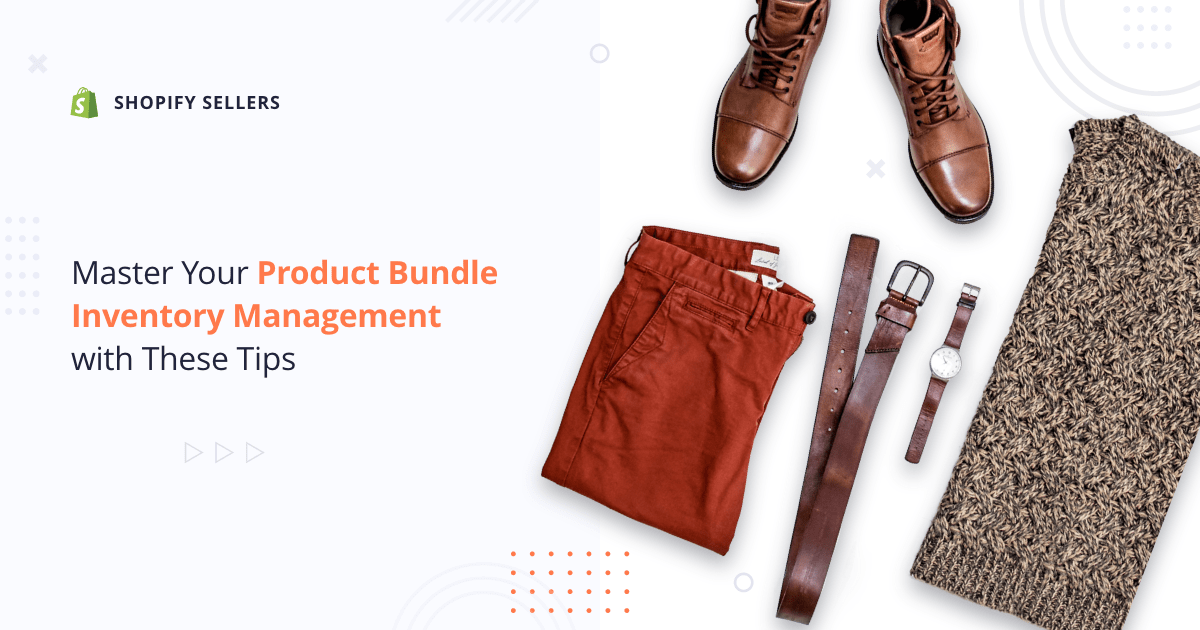
Shopify Sellers, Master Your Product Bundle Inventory Management With These Tips
Contents
Last time you went shopping, chances are you didn’t even notice that many products are bundled together for easy grab-and-go. For example, shampoo and conditioner are often sold as a set, and 2-in-1 “value” packages are popular for everything from toothpaste to t-shirts. This isn’t an accident. Product bundling is a classic tactic amongst brick-and-mortar and ecommerce retailers because it has several benefits for shoppers and sellers alike.
The one downside of selling product bundles is that it can make inventory management a bit more challenging. Inventory management on its own is tricky—sellers have to track how many items are in each warehouse location, and it can lead to overselling—even before introducing bundles. The added complications can confuse your inventory software and leave you wondering, how much product do I actually have?
With this in mind, we’re taking a look at how product bundles can boost Shopify stores and what to do to prevent an inventory disaster so you can keep your stock in tip-top shape, bundles and all.
Need more tips for selling on Shopify? This guide has 10 things you want to avoid while using Shopify as your ecommerce platform.
The Benefits of Bundles
Product bundling offers benefits not only to you as a Shopify seller but also to your customers. It gives them a more convenient, curated shopping experience, while retailers see their profits jump and can get rid of out-of-season or older products.
Here’s a quick breakdown the of benefits of bundles:

Average Order Value
When movie theaters were all the rage in pre-pandemic times, concessions counter transactions would usually include some version of, “Would you like to add a drink for only a dollar more?” Plenty of moviegoers would opt to get a drink because of the perceived value; and just like that, their total order values are more significant. Once enough customers agree to bundle products and complete a larger purchase, the average order value rises. Adding bundles meant that movie theaters—and retailers—would generate more revenue with the same number of sales.
Customer Value
On the flip side, product bundling benefits customers because they get to feel like they scored a good deal. Research from Ask Your Target Market found that 79% of consumers consider themselves “bargain hunters” and make these bargains a centerpiece of their shopping strategy. To continue the movie theater example, many customers will choose to add on a drink because it’s only a dollar when bundled with other snacks. It’s a good value. This looks a bit different in your Shopify store, but the same concept applies. Offering bundled products at a lower price together than they are separately is a can’t-miss deal.
Convenience
The low barrier to entry makes ecommerce an excellent choice for entrepreneurs, but it also means millions of online stores and billions of products for shoppers to choose from. Decision fatigue is a real phenomenon, but product bundles make it a little easier. The prepackaged options take the guesswork out of shopping so consumers can add to their carts and check out seamlessly. Here’s a bonus: Speeding up the deliberation process with product bundles gives shoppers less time for second-guessing their purchases.
Personalization
Personalization is the name of the game in today’s fast-paced ecommerce landscape. Most shoppers (80% of them, to be specific) appreciate customized offerings. They want the “Amazon experience” of seeing products curated for them based on their browsing behavior and purchase history. Though product bundling requires no artificial intelligence, it hints at that same element of curation. You, the seller, thoughtfully selected multiple items your customers might enjoy together and are selling them at a discounted rate. Customers then feel seen and appreciated, and they return to your site to recreate that feeling.
Stock Clearouts
Sellers know the pain of paying for warehouse space to store product that isn’t moving. But with bundles, it’s possible to offload products to clear out overstock or out-of-season items. Simply pair your slow-moving items with your bestsellers to boost their perceived value. Alternatively, you can pair older items with newer ones to keep the static items relevant.
Bundling Challenges
Product bundling comes with its challenges, but a common inventory-related example is running out of stock for one (or more) items in the bundle. Unless your inventory forecasting is dialed in and you’re getting regular deliveries from your supplier, you risk running out of items and having to hide the bundle listing. There are two ways online retailers can get around this:
- Offer several bundles to give customers options and hopefully spread demand across multiple bundles.
- Sell the items exclusively in product bundles on Shopify, so there are fewer opportunities to buy them.
Additionally, the Shopify seller forums revealed that some merchants who sell product bundles struggle with tracking inventory by individual products and by bundles. Here’s an example: If your online store sells sweats and hoodies that can be bundled together for a discount, Shopify recognizes three SKUs. The sweats are item A, the hoodies are item B, and the bundle is item C. When someone buys a bundle, however, only the quantity of item C is reduced. This disrupts the rest of the inventory and gives sellers an inaccurate picture of their business’s standings.
Automating your inventory management is the solution that alleviates these pain points and keeps your Shopify business running smoothly.
Manage Shopify Inventory with Webgility
QuickBooks isn’t just accounting software. It’s also a great inventory management solution. For Shopify sellers harnessing the full capacity of QuickBooks, automating your product bundle inventory management is just a few clicks away.
Sellers can set up group type items in QuickBooks to use for products that are commonly sold together but are still independent items and stay that way until an order is picked—like a product bundle. These groups can easily be disassembled, which makes them different from assembly type items. Once you set up QuickBooks to mimic what you are doing in the real world, you can set up the Webgility scheduler and let it work its magic. Inventory will be deducted from the correct totals, whether products are sold individually or in bundles. QuickBooks makes it possible; we make it easy.
By guest contributor Taylor Knauf



 The Webgility Team
The Webgility Team